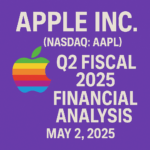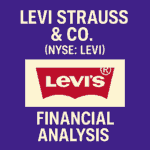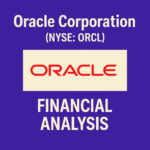Bank of America Corporation (NYSE: BAC)
Financial Analysis | April 25, 2025
Company Overview
Bank of America is one of the world’s largest financial institutions, offering a full suite of banking and financial services including consumer banking, corporate and investment banking, wealth management, and markets services. With assets exceeding $3 trillion and a global footprint, it serves individuals, businesses and institutions through digital platforms and a network of branches.
Key Statistics
Market Cap
$299.23 B
Revenue (TTM)
$97.45 B
Net Income (TTM)
$26.35 B
Shares Out.
7.56 B
EPS (TTM)
$3.35
P/E Ratio
11.82
Forward P/E
10.60
Dividend Yield
2.63%
Beta
1.25
Ex-Div Date
Jun 6, 2025
Earnings Date
Apr 15, 2025
Trading at a mid-teens P/E with a solid dividend yield, Bank of America’s diversified business mix and strong capital ratios underpin its earnings stability.
Quarterly Revenue & Net Income
Revenue rose from $23.9 B in Q2 2024 to $25.9 B in Q1 2025, while net income to company climbed from $6.9 B to $7.4 B—reflecting improving net interest margins and expense control.
Margin Trends
Operating margins have held above 30%, and profit margins around 28–29%, demonstrating resilient profitability as interest rates have firmed.
Valuation Metrics
With a PEG under 1.0, BAC’s forward P/E of 10.6 and P/B near 1.1 suggest attractive valuation relative to global banking peers.
Balance Sheet Snapshot
BAC holds ~$274 B in cash, $757 B in debt (net cash ~$228 B), with a debt/equity ratio of 2.56 and a current ratio of 1.29.
Quarterly Stock Performance
BAC’s share price ranged from ~$39 to $44 over the past year, reflecting sensitivity to rate moves and bank sector sentiment.
Risks & Opportunities
Risks
!
Economic downturn could spur loan losses.
!
Regulatory/compliance pressures remain elevated.
!
Margin compression if rates stabilize.
!
Intense competition across financial services.
Opportunities
+
Higher rates boosting net interest income.
+
Growth in digital banking and wealth management.
+
ESG and sustainable finance product demand.
+
Cross-sell synergies across global operations.
Conclusion
Bank of America’s improving margins, strong liquidity and attractive valuation support a positive medium-term outlook, balancing yield with potential capital appreciation.
Disclaimer: This analysis is for informational purposes only and does not constitute investment advice. Investors should conduct their own due diligence or consult a licensed financial advisor.







